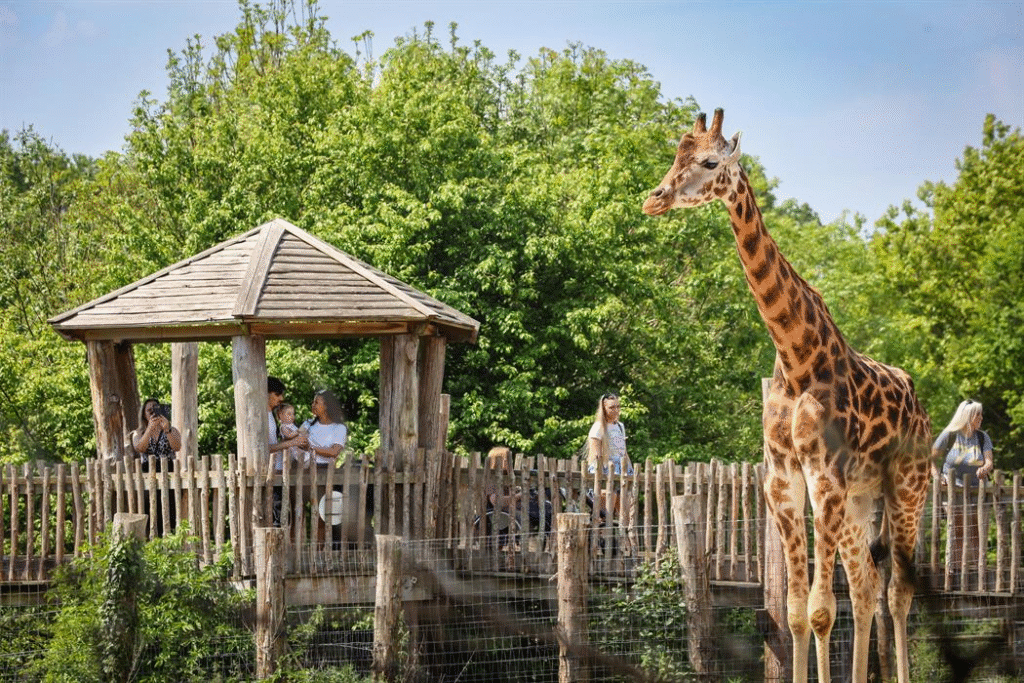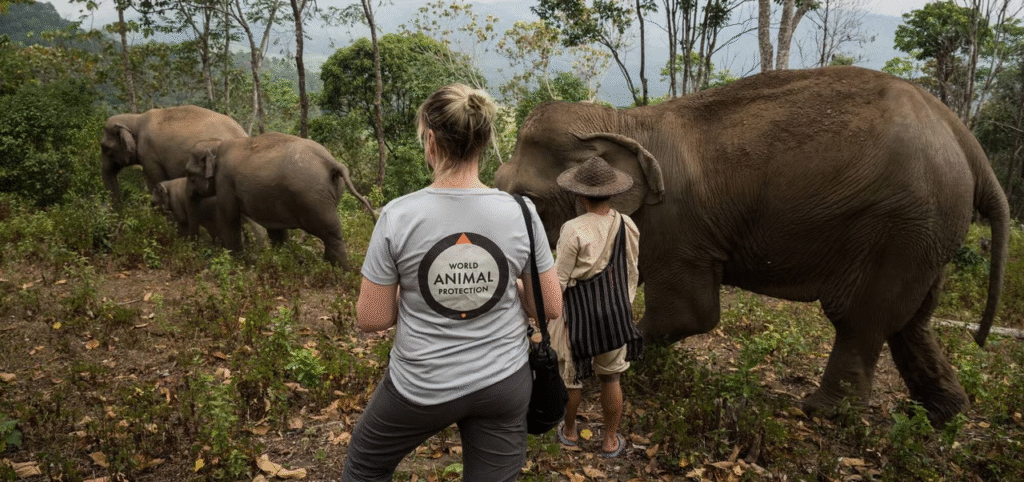At first glance, zoos and animal sanctuaries may look similar. Both places house animals, allow people to visit them, and claim to protect wildlife. However, there are important differences between the two. These differences are not just about how they look, but also about how they treat animals, what their goals are, and how they operate.
In this article, we’ll explore what separates a zoo from a sanctuary, how they treat animals differently, and why it matters for animal welfare and conservation.
Purpose: Why Do They Exist?
Zoos:

The main goals of most zoos are:
- Entertainment
- Education
- Conservation
- Research
Zoos are usually open to the public and are designed to attract visitors. While many modern zoos promote conservation and education, their foundation is still built around showing animals to humans. In some cases, zoos breed animals to display their babies, which can increase ticket sales.
Sanctuaries:

The primary goal of a sanctuary is:
- To provide a safe, lifelong home for animals in need
Animal sanctuaries exist mainly to rescue animals from bad situations. These animals might come from:
- Circuses
- Research labs
- Zoos that shut down
- Private owners who can’t care for them
- Farms or illegal trade
Unlike zoos, sanctuaries focus on animal well-being first. They do not exist to entertain people but to care for the animals in a peaceful, respectful environment.
Animals: Where Do They Come From?
Zoos:
Most animals in zoos are born in captivity or traded from other zoos. In some cases, wild animals are captured and brought to zoos, although this is becoming less common due to ethical concerns.
Zoos may breed animals to increase populations or for display. However, some critics argue that breeding often prioritizes “popular” animals, like lions or pandas, rather than endangered or native species that need the most help.
Sanctuaries:
Sanctuaries do not breed, buy, or sell animals. Animals living in sanctuaries are almost always rescues. They may have been abused, neglected, or abandoned, and many cannot be returned to the wild due to injury, trauma, or long-term captivity.
A sanctuary’s mission is not to produce more animals, but to help the ones already in need.
Living Conditions: Enclosures and Space
Zoos:
Zoo animals are often kept in man-made enclosures that are designed to look like natural habitats. However, space can be limited, especially in older or smaller zoos.
While modern zoos have improved compared to the cages of the past, many animals still live in spaces far smaller than what they would experience in the wild. For example, a tiger might roam dozens of miles in the wild but only have a few hundred square feet in a zoo.
Zoo animals may also be trained or encouraged to perform for crowds. Some zoos hold animal shows, feeding sessions, or other activities meant to entertain visitors.
Sanctuaries:
Sanctuaries try to offer animals as much space and freedom as possible, depending on their funding and land size. Animals are given quiet, natural settings and are not forced to perform or interact with humans.
In a sanctuary, animals are treated as individuals with emotions and needs—not as exhibits. Many sanctuaries even limit public access to reduce stress on the animals.
Public Access: Can People Visit?
Zoos:
Zoos are usually open to the public year-round. Visitors can walk through exhibits, take pictures, and watch animals from up close. Some zoos offer animal rides, petting zoos, or feeding stations.
Many zoos depend heavily on ticket sales, food stands, and gift shops for income, so the focus often stays on visitor experience.
Sanctuaries:
Sanctuaries may allow limited public visits, but animal comfort comes first. Some only allow small guided tours, scheduled visits, or educational programs.
The purpose is to educate visitors about animal welfare, not to entertain them. Sanctuaries want to help people understand the lives and needs of rescued animals, especially those who suffered in previous homes like circuses or roadside zoos.
Breeding and Selling Animals
Zoos:
Many zoos participate in breeding programs, both for conservation and for increasing their animal populations. Some also exchange or sell animals to other zoos.
While some breeding programs aim to protect endangered species, others face criticism. For example:
- Breeding can lead to surplus animals, which may be euthanized or sold to questionable facilities.
- Breeding popular species may be prioritized over species truly in need of help.
Sanctuaries:
Legitimate sanctuaries do not breed, sell, or trade animals. They believe that animals should not be treated as property or entertainment. The focus is on care and healing, not on reproduction.
If a sanctuary is breeding animals or selling them, it may not be a true sanctuary—it could be a private zoo or a business pretending to be a rescue.
Animal Interaction and Handling
Zoos:
Some zoos allow visitors to touch, feed, or ride animals. This includes activities like:
- Elephant rides
- Giraffe feeding
- Petting reptiles or baby animals
These interactions can be stressful or harmful to animals, even if they seem safe or fun for people. Young animals used for petting are often taken from their mothers and later discarded when they grow up.
Sanctuaries:
Animals in sanctuaries are usually not touched or handled by the public. Many of them have experienced trauma, and interacting with strangers can cause stress or fear.
The idea is to let animals live in peace. If human contact is allowed, it’s limited to trained staff and done with the animal’s comfort in mind.
Licensing and Regulation
Zoos:
Most zoos are regulated by local or national governments. Some zoos are part of larger networks like the Association of Zoos and Aquariums (AZA), which requires them to meet certain standards for care and safety.
However, not all zoos meet high standards. Some roadside zoos or private collections operate with minimal oversight.
Sanctuaries:
True sanctuaries are usually licensed by animal welfare organizations, such as the Global Federation of Animal Sanctuaries (GFAS). These organizations inspect facilities and only approve those that meet strict ethical and care standards.
If a place calls itself a sanctuary but allows petting, breeding, or animal performances, it may not be accredited or trustworthy.
Ethics: What’s Best for the Animals?
The biggest difference between zoos and sanctuaries comes down to ethics. Zoos put more focus on people’s enjoyment, while sanctuaries put the focus on the animals’ needs.
While some zoos work on conservation, critics argue that keeping animals in small spaces for display is still unethical, especially for large or intelligent species like elephants, orcas, and primates.
Sanctuaries, on the other hand, work to correct the harm humans have done. They don’t breed animals, sell them, or force them to perform. Their goal is to let animals live out the rest of their lives in peace.
How to Tell the Difference
If you’re unsure whether a facility is a zoo or a sanctuary, ask yourself these questions:
- Are animals bred, sold, or traded?
- Are there animal shows, rides, or petting sessions?
- Do animals live in natural, spacious settings?
- Is the focus on education or entertainment?
- Are public visits limited to reduce stress on animals?
True sanctuaries always prioritize the well-being, freedom, and dignity of the animals they care for.
Choosing to Support the Right Places
Understanding the difference between zoos and sanctuaries helps us make better choices. While some zoos are improving and support conservation efforts, many still treat animals more like exhibits than living beings.
By choosing to visit or donate to ethical sanctuaries, you support rescue work, education, and real care for animals who need it most. Every time we choose kindness and respect over entertainment, we take a step toward a world where animals are treated as they deserve.



